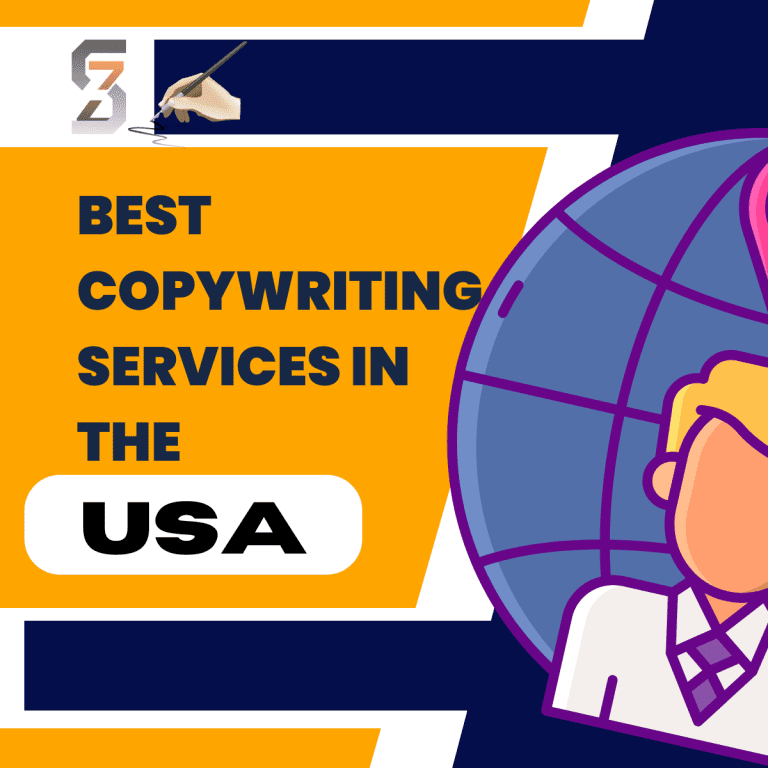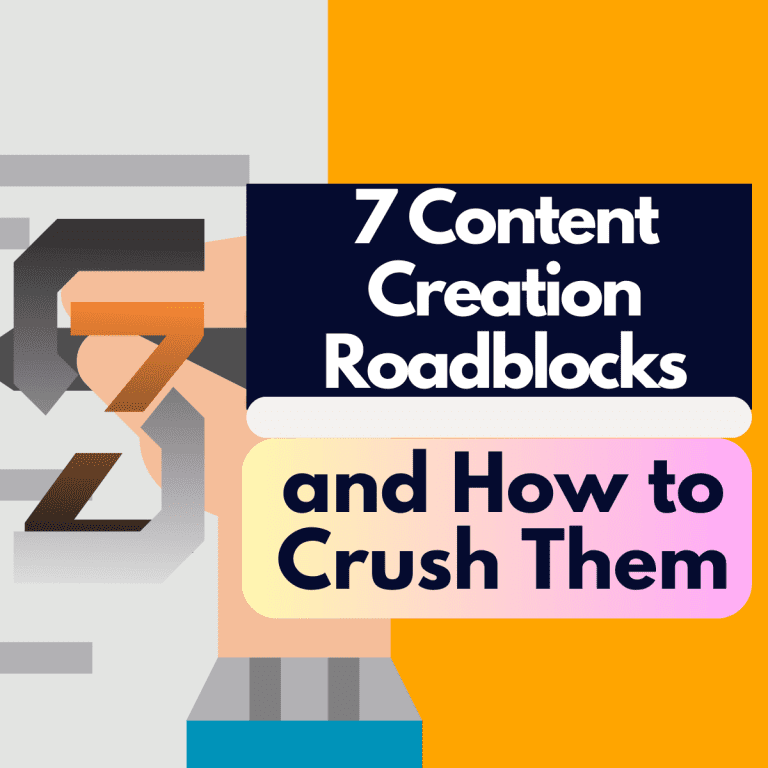Please Follow us on social media >>>>
5 WAYS TO WRITE INFORMATIVE CONTENT THAT GETS SHARED
Writing informative content is an important aspect of content creation as it helps to educate, inform, and engage the reader.
But writing informative content that is both engaging and effective can be a challenge.
5 PRACTICAL WAYS TO WRITE INFORMATIVE CONTENT THAT GETS SHARED
Writing informative content is an important aspect of content creation as it helps to educate, inform, and engage the reader. But you don’t want to write just anything, you want to Write content that gets shared.
That is why I am sharing with you in this article the 5 practical ways to write informative content that gets shared.
If you are a freelancer looking for ways to get your next writing gig, this article is for you. Or maybe you are a content writer just looking for ways to write content that can be shared, I got you covered.
If you want to know the easiest ways to write 2000 words in 30 minutes or less, go check out this article on exactly how I write 2000 words with simple strategies.
Whether it’s a blog post, article, or academic paper, having a clear and concise message is crucial for success.
It can be a challenge to write content that is both informative and engaging at the same time. But with a few tips, your content can be just what you want it to be. That is, to speak to your readers and move them to action.
From conducting thorough research to using visuals and engaging the reader, I will provide tips and best practices to help you create informative content that stands out.
Before you jump on that white paper staring at you, you will have to gather your information, brainstorm, and put your thoughts together. Let us dig in now on my promise of providing you with 5 practical ways to make your content engaging and, get it shared.
1. Research Your Content Topic Thoroughly:

Conducting thorough research is crucial when writing informative content. People will only read your piece if you promise to answer their questions.
From the onset, your readers should be able to discern why they should read what you are writing. But that does not just happen. It takes a lot of work to get and keep people’s interest. All of these start with carrying out the right research.
How to effectively research your content:
Define your topic:
Define what you want to write about. Make sure it is a topic that you have a strong understanding of and are passionate about.
A topic might be close to your heart, but it may not be what your audience wants to read. It is at the research stage that you will figure out what your audience wants.
Look out for questions bordering on your target audience. And come up with a coherent way to present the answers to the questions they ask.

Identify and quote authoritative sources.
As you do your research, look out for authorities in your niche and include those in your writing. These could include, but are not limited to, the following:
Use government websites to create quality content that gets shared.
Depending on what you are writing about, there are always government websites that can be quoted. If, for example, you are writing about customs, an official government website from the Ministry of Commerce, foreign affairs, and so on can be a good and authoritative site to quote. This will be very useful as it serves as a reference for possible verification of the facts you present.
Academic journals are a good place to find authority for your content.
If I am to write about aviation, quoting what a popular university says on the subject will have some weight. and will serve to make the content more authoritative and increase trust. So it is good practice to look for and quote these institutions and the research they have done to back up your proposition.
Use well-respected experts to gather information for your content.
During the time of COVID-19, doctors are going to places for COVID-related matters. In the U.S., we have Dr. Fauci as an authority in the field. Even the well-known CNN news channel will often quote him and have him on the show. That is the power of well-known experts. Using these types of experts can add authority to your content and increase trust and engagement.
Take important notes during your content research:
As you gather information, take notes to keep track of the important points you want to include in your content. If you are in a seminar, you may want to keep a note of all the important points you want to remember.
Tools like Google Notes and their equivalents will be enough to gather and keep these notes. Next, take a second look at the sources of your information and verify that they are authentic.
Referring to your notes when writing will help you develop and write informative content that can be shared by your audience. Look out for the key points from your notes, sometimes, these could be made into a subheading or topical sentences.
Evaluate the sources of the information you have before you write the content.
Make sure the sources you are using are credible and up-to-date. Avoid sources that are biased or outdated.
During your research, you may come up with information that is bogus and farfetched. Edit them to prune off the unwanted parts. Then verify the authenticity of everything you have. When done right, you will increase the confidence and trust of your readers.
Cite authoritative sources in your content:
To increase the credibility of your content, include proper citations for any information you gather from external sources. You do not want to take credit for what is not yours. Your readers will trust you more if they know you are quoting an authoritative source.
According to a study by the International Journal of Scientific and Technology Research, “citing authoritative sources and including supporting evidence is essential in providing credible and reliable information to the reader.”
“Properly citing sources helps to establish the credibility of the information and can also prevent plagiarism.”
2. Be Clear and Concise.
To effectively communicate your message to the reader, it’s important to be clear and concise in your writing. No one is going to read past the heading if they cannot understand where you plan to take them with your content. If they make it past the heading, they probably will not read past the first paragraph if your content is not clear enough.
How to write clear, concise, and informative content that gets shared :
- Define your target audience: Identify who your target audience is and tailor your writing style to suit their needs.
- Keep sentences short and simple. Use short, simple sentences that are easy to understand.
- Avoid complex sentences and technical jargon that may confuse your reader.
- Focus on the main message: Make sure to highlight the key points of your content and avoid including irrelevant information.
- Mention one thought per paragraph.
- Use active voice: Use active voice to make your writing more engaging and direct.
- Edit and proofread: Take the time to review your content and make any necessary revisions.
- Make sure to check for typos, grammatical errors, and clarity.
According to a report by Forbes, “concise writing helps to get your point across quickly and effectively while being clear helps your reader understand your message.”
So if your content is clear enough, your audience will keep reading and even share what you have with their social media contacts.
It is best to start with a clear hook and lead your audience to read from the first sentence, the second, then the third sentence and throughout your copy.
3. Use Visuals to Write Content That Gets Shared:
Adding visuals to your content can help illustrate important points and make the content more engaging for the reader. It will also make your readers remember your content for a long time. People may forget what they read, but they will not easily forget what they saw.
When you have great visuals for your content, the chances of social sharing increase.
There are times when words are not quite enough to convey a message. For those times, your visuals will convey the message..
Echez O’ Ford
Effectively use visuals in your content:
- Choose the right visuals: Select visuals that are appropriate for your content and enhance your message. Examples include charts, graphs, and images, that are appropriate for your content and enhance your message. Examples include charts, graphs, images, videos, and infographics.
- Label and caption your visuals: label your visuals clearly and provide captions to help the reader understand what they are seeing. You don’t want your fonts to be too small; otherwise, the message will be lost.
- Use visuals to support your message: Make sure that the visuals you include are relevant to your content and support your message.
- Keep visuals simple. I have been caught up with adding too many items to my visuals. You would be better off without Some of this media. It crowds out the important elements of your content. Avoid using overly complex or busy visuals that may confuse the reader.
- Make visuals accessible: Consider making your visuals accessible by adding alt text for images and closed captions for videos.
According to a study by the Journal of Business Research, “the use of visual aids can significantly improve a reader’s understanding of the content, making it more memorable and easier to recall.”
So go ahead and create great visuals for your content. You can start by downloading Canva; its free version will be enough to get you started.
4. Break Your Content Down to Make It shareable and Engaging:
Breaking up long text sections can help make your content more readable and easier to understand. I feel intimidated to look at a long section of text.
No one will care to go through the trouble of reading your piece if it does not appeal to them. One way to make your content more appealing is to break long paragraphs down into headings and subheadings.
How to break down your content effectively:
- Use headings and subheadings. Use these to organize your content into sections and make it easier for the reader to navigate.
- Use bullet points: Bullet points add style and appeal to your writing and can be used to highlight key points and make the content more visually appealing.
- Keep paragraphs short. Limit your paragraphs to a maximum of three to four sentences to keep the content from becoming too dense.
- Use white space: Use white space effectively to break up the content and make it easier on the eyes. Your readers will get bored and click away if you compromise on white spaces.
5. Engage the reader with your content:

One of your major objectives in writing is to move your readers to take action. People will naturally not take the desired action unless you show them the way and make it easy for them to do so. Therefore, you must give a clear call to action.
Encouraging interaction with your content can make it more memorable and enjoyable for the reader. Below is how to engage your reader:
- Include call-to-actions: Encourage the reader to take action, such as leaving a comment, sharing the content, or signing up for a newsletter.
- Use interactive elements: Add interactive elements such as quizzes, surveys, or games to your content to make it more engaging. Do not overdo this tip.
- Encourage feedback: Invite the reader to provide feedback and ask questions by including contact information or a comments section.
- Personalize the content: Address the reader directly and use a conversational tone to make the content more relatable.
According to a report by the Content Marketing Institute, “Engaging content helps to build a relationship with the reader, increase their engagement with the brand, and ultimately lead to higher conversion rates.”
While you are at it, don’t forget to add some valuable links to your content. This is one major way to build trust with your audience. You will help them trust you more if you include your sources in your content. And you will be building some good relationships with the owners of the resources you use. It is called Backlinking.
So, now you have discovered the 5 practical ways to write informative content that is clear, concise, engaging, and gets shared. What are you waiting for?
Go ahead and craft that piece that will get shared. But if you don’t have time to write, we have a team that can do that for you.
Contact us today to proceed with all your digital marketing needs. Drop your comments in the comment section, and we will get back to you with solutions to any concerns you may have.
And don’t forget to share this with your friends; it will not cost you anything to spread the word.







[…] Writing a proposal may sound similar to creating a portfolio, but they are different things. The difference is that your portfolio is a reference for everyone, client or not. Your portfolio contains a list of all or most of your notable work. Anybody can take a look at what you say you do right in your portfolio. […]
[…] content bank is a place where you write and keep all the content you’ll love to write about. One fact about the content bank is that […]
[…] to craft content that is both relevant and sharable. Once you have found a relevant approach to the content you want to write about, move on to the next point. […]
[…] your blog, you will be creating content that is optimized for search engines and then share it on social media and other channels. This will help you attract new visitors to your site and […]
[…] You cannot produce great content if you do not in some ways consume great content […]
[…] in this website, we can help with writing quality content that gets ranked on Google for your […]
[…] you want to learn how to write informative content that makes them say “yes” to your […]
[…] face it, writing content that gets the job done is a lot of work. That is why we offer you our services at a reduced […]
[…] If you ever dream of making money on the internet, then you must have heard that you should be ready to write informative content that people will read. […]
I simply desired to say thanks once again. I’m not certain the things that I could possibly have accomplished without the actual thoughts documented by you concerning my area. It has been an absolute frustrating condition in my position, however , coming across your skilled approach you processed that took me to leap over fulfillment. Now i am happy for this advice and thus hope you realize what an amazing job that you are doing instructing people today all through your web blog. More than likely you have never met all of us.
I like the comprehensive information you provide in your blog. The topic is kinda complex but I’d have to say you nailed it! Look into my page Article Star for content about SEO.
Superb layout and design, but most of all, concise and helpful information. Great job, site admin. Take a look at my website 81N for some cool facts about Airport Transfer.
Hi Earnest, thanks for stopping by, I did take a look at your site, you have great things going on. I see that you cover many topics beside airport. Keep it up.
If you do need help with content writing of any kind, reach out to us here: https://successzenith.com/metform-form/writing-job-inquiry-order/
I discovered your blog site on google and check a few of your early posts. Continue to keep up the very good operate. I just additional up your RSS feed to my MSN News Reader. Seeking forward to reading more from you later on!…
Thank you for sharing this information!
You are welcome, Winfred Wilbanks, please also feel free to check out other of our content and services.
I am extremely impressed with your writing skills as neatly
as with the format for your blog. Is this a paid subject or did you customize it your self?
Anyway keep up the nice high quality writing, it’s uncommon to peer a great weblog like
this one today.
Hello
Thank you for your thoughtful feedback! I truly appreciate your compliments on my writing and the blog format.
The article was not paid for; I created it myself.
I’m also open to any form of collaboration, so feel free to reach out if you have any ideas!
Your encouragement means a lot, and I look forward to sharing more content with you in the future!
Best regards.
Have you ever considered about including a little bit
more than just your articles? I mean, what you say is valuable
and everything.
Nevertheless imagine if you added some great graphics or videos to give your
posts more, “pop”! Your content is excellent but with pics
and clips, this site could undeniably be one of the best in its niche.
Amazing blog!
Thank you so much for the thoughtful feedback.
I really appreciate your suggestion, adding visuals is definitely something I’m planning to do more of.
Glad you’re enjoying the content
Good day! This is kind of off topic but I need some advice from an established blog.
Is it difficult to set up your own blog? I’m
not very techincal but I can figure things out pretty fast.
I’m thinking about setting up my own but I’m not sure
where to begin.
Do you have any tips or suggestions?
Many thanks
Hi! Thanks for your message; happy to help!
Starting a blog isn’t as hard as it may seem, even if you’re not very technical.
Here’s a simple roadmap:
1. Choose a platform:
For beginners, I recommend WordPress .com or Wix, both are user-friendly and require no coding.
2. Pick a niche:
Focus on a topic you enjoy and know something about, it makes content creation easier and more fun.
3. Get a domain name:
You can buy one through platforms like Namecheap or directly through WordPress. But here, we use Namesilo
4. Use a simple theme:
Start with a free, clean theme. Don’t worry about perfect design at first: focus on your content.
5. Just start writing:
Practice is key. Publish your first few posts and improve as you go.
Feel free to DM me if you want more help getting started!
Just read your piece on 5 ways to write informative content, loved how practical and clear your tips were.
Especially appreciated the point about understanding your audience before you write, it’s a game-changer.
Thanks for sharing these valuable insights!
Reading this is like wandering through an unfamiliar yet welcoming garden. Each sentence reveals subtle beauty and invites careful observation and quiet appreciation.